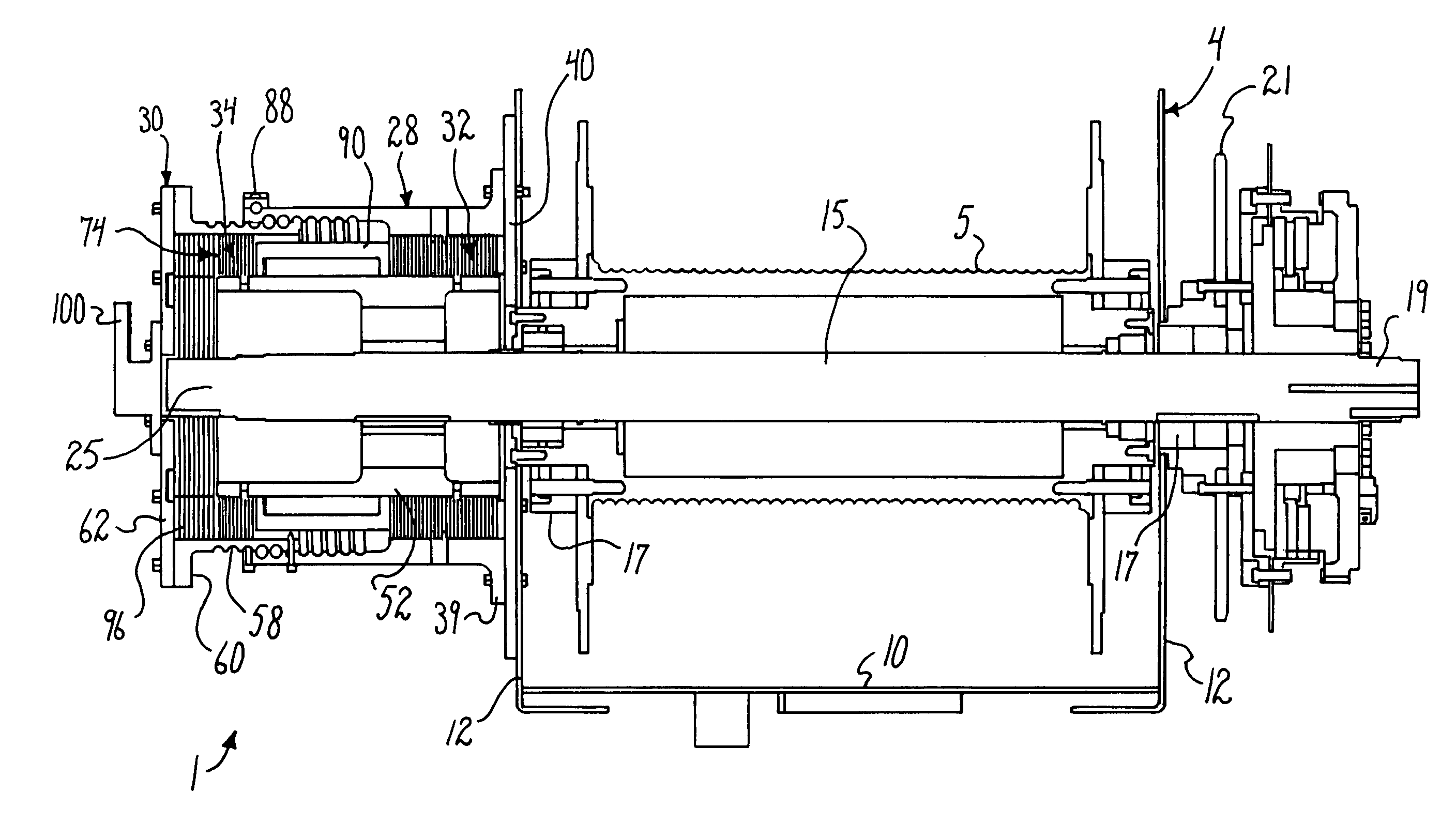Fluid shear actuated hoist brake
a technology of hydraulic shear and hoist brake, which is applied in the direction of hoisting equipment, mechanical equipment, shock absorbers, etc., can solve the problems of complex arrangement involving a substantial number of components, system complexity, and inability to simply free-fall the load, and achieve the effect of free rotation of the sha
- Summary
- Abstract
- Description
- Claims
- Application Information
AI Technical Summary
Benefits of technology
Problems solved by technology
Method used
Image
Examples
Embodiment Construction
[0028]As required, detailed embodiments of the present invention are disclosed herein; however, it is to be understood that the disclosed embodiments are merely exemplary of the invention, which may be embodied in various forms. Therefore, specific structural and functional details disclosed herein are not to be interpreted as limiting, but merely as a basis for the claims and as a representative basis for teaching one skilled in the art to variously employ the present invention in virtually any appropriately detailed structure.
[0029]Referring to the drawings in more detail, the reference numeral 1 (FIGS. 2 and 3) generally designates an embodiment of a fluid shear actuated hoist brake mechanism according to the present invention. In general, the hoist brake mechanism 1 is used in cooperation with hoist equipment 2 to control the lifting and lowering of a load 3 (FIG. 1). The hoist equipment 2 includes a hoist framework 4 on which a cable drum 5 is rotatably mounted and on which a h...
PUM
 Login to View More
Login to View More Abstract
Description
Claims
Application Information
 Login to View More
Login to View More - R&D
- Intellectual Property
- Life Sciences
- Materials
- Tech Scout
- Unparalleled Data Quality
- Higher Quality Content
- 60% Fewer Hallucinations
Browse by: Latest US Patents, China's latest patents, Technical Efficacy Thesaurus, Application Domain, Technology Topic, Popular Technical Reports.
© 2025 PatSnap. All rights reserved.Legal|Privacy policy|Modern Slavery Act Transparency Statement|Sitemap|About US| Contact US: help@patsnap.com



